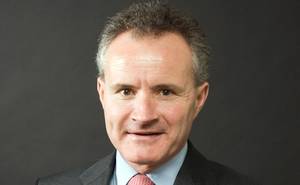For much of the last few years Europe has been viewed warily by investors as the sovereign debt crisis and a mixed economic picture have weighed on sentiment. In fact, it has become something of a badge of honour to avoid the continent. Crises, however, have a habit of encouraging transformative change and Europe is gradually reshaping itself.
The end of 2012 was interesting because for the first time in three years Europe avoided the spotlight. Instead, it was the turn of the US to be in the public glare as politicians frantically scrabbled to secure a deal that prevented the US economy falling off the so-called ‘fiscal cliff’. In echoes of earlier eurozone debates only a partial solution was agreed, with the budget decisions and debt ceiling talks delayed to the end of February.
For Europeans looking across the Atlantic they might be forgiven a wry smile and a sense of déjà vu. After all, whilst the US is only starting to face up to its structural problems, Europe has already been having these debates – in public – for the better part of three years.
Structural reform is underway
For all its faults, the straitjacket of the euro forced issues to a head, most notably the need for structural reforms. For countries such as Ireland and Greece, therefore, austerity programmes are well advanced. A cursory glance at the bond markets highlights this. Only two years ago Ireland was a pariah nation but now it is able to borrow in the open market at rates only a few percentage points above Germany, whilst its banking sector is fast rehabilitating.
It might seem Machiavellian but European companies, particularly the more globally-facing multinationals, have used the crisis in Europe to their advantage. One of the French electronics firms that we hold confessed to us that in ordinary circumstances they would never have been able to drive through the restructuring and plant consolidation they wanted to do were it not for the crisis dissuading politicians from blocking reforms. The result: European companies have been able to get fit quickly, focusing their operations on their more profitable businesses and culling the underperforming areas.
The carousel of eurozone crisis summits and market volatility was draining, but it led to incremental improvements and engendered greater political consensus. This was evidenced in the summer of 2012 when the eurozone was priced for an existential crisis. Politicians were spurred into action and the pragmatic approach taken by Mario Draghi, the European Central Bank president, particularly his pledge to preserve the euro helped to deter some of the more destabilising speculation, allowing markets to focus more on fundamentals and valuations.
Eurozone aggregate numbers attractive
As the hysteria surrounding a possible break-up of the eurozone faded, commentators have begun to look more objectively at the region. Europe combines net goods exporting countries such as Germany with net importers such as Spain. At the consolidated level, therefore, the eurozone is broadly in trade balance, unlike the US which runs a constant trade deficit or Japan which is reliant on exports. Similarly, the media has focused on the fiscal sinners but many European countries have their spending house in order and have relatively low levels of national debt. At the aggregate level, therefore, Eurozone net government borrowing in 2012 as a percentage of gross domestic product is forecast to come in at 3.3%, well below the 8.7% level of the US and 10.0% level of Japan.


Source: International Monetary Fund, World Economic Outlook Database, 2012 estimates, October 2012
When presented with such facts, it becomes far easier to comprehend why European equity markets performed well in the second half of 2012. The FTSE World Europe ex UK Total Return Index rose 15.3% in sterling terms in the final half of 2012, outperforming the equity markets of the UK, Japan and the US.
That said, I tend to become wary when a market does well, as it is more vulnerable to a correction or profit-taking. Neither of these should be ruled out over the coming months, particularly as global economic concerns and political hurdles, such as the Italian elections, are never far away, but for investors with a meaningful investment time horizon, Europe remains attractive. It is a region replete with quality cash-generative companies, many of which are household names with a global footprint, such as Adidas, the sportswear company, Roche, the pharmaceutical, Nestle, the food group, and BMW, the car manufacturer.
Whilst it might be argued that the better quality companies in Europe have already enjoyed something of a re-rating, they are generally still inexpensive relative to their peers in other regions. What is more, whole swathes of Europe have largely been shunned by investors. This is why we are tentatively identifying opportunities in peripheral areas of Europe such as Spanish domestic banks, encouraged by low valuations and a regulatory environment that is becoming less onerous.
Europe is beginning to emerge from the shadow of the crisis. For those investors who are prepared to look more deeply, they will discover a region that may be building towards a starring role in an investment portfolio.





 For Elena Santiso
For Elena Santiso

 For Fórmate a Fondo
For Fórmate a Fondo